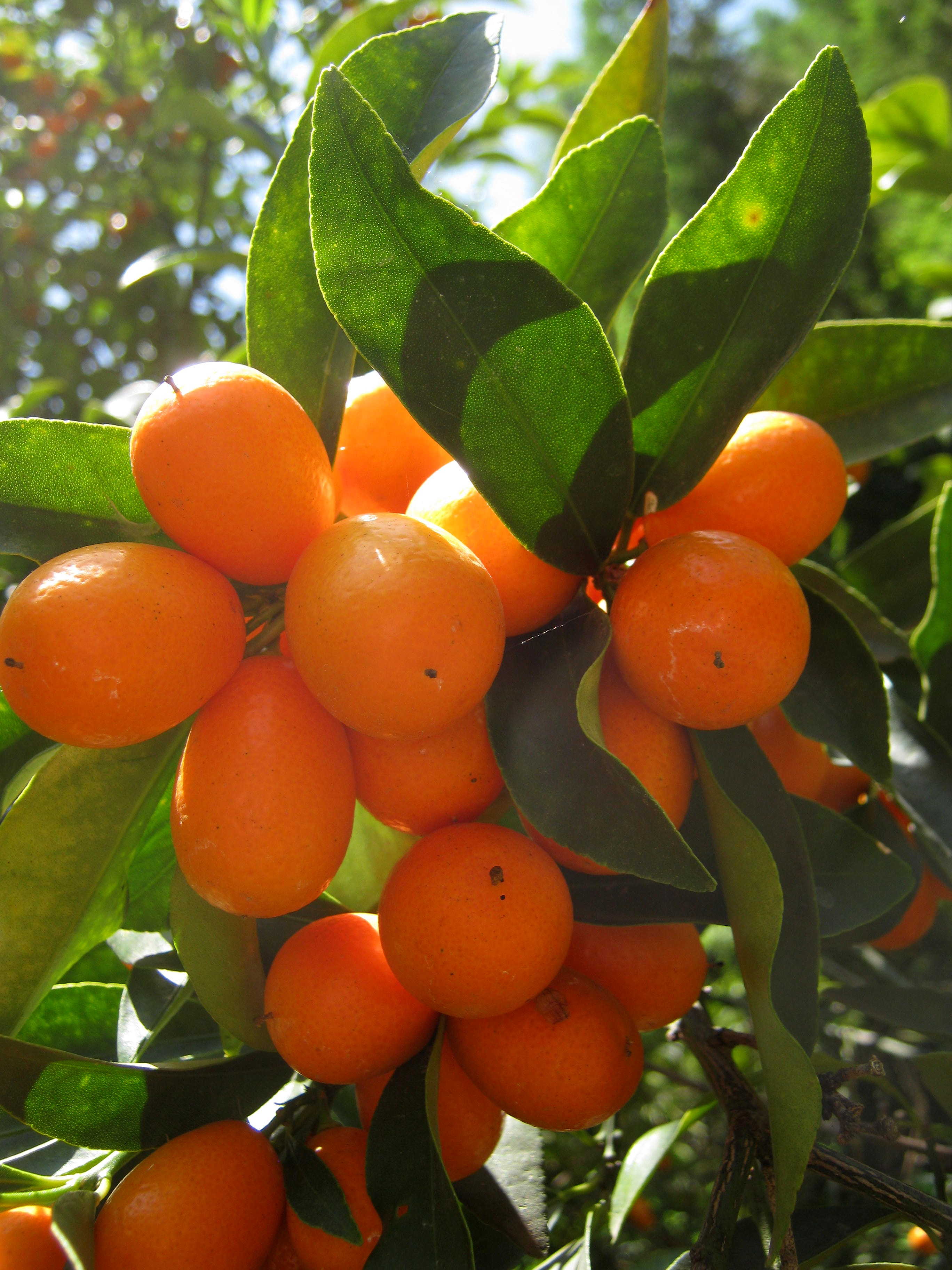
Kumquats
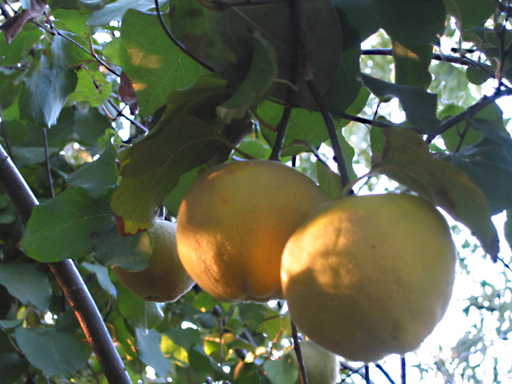
Quince
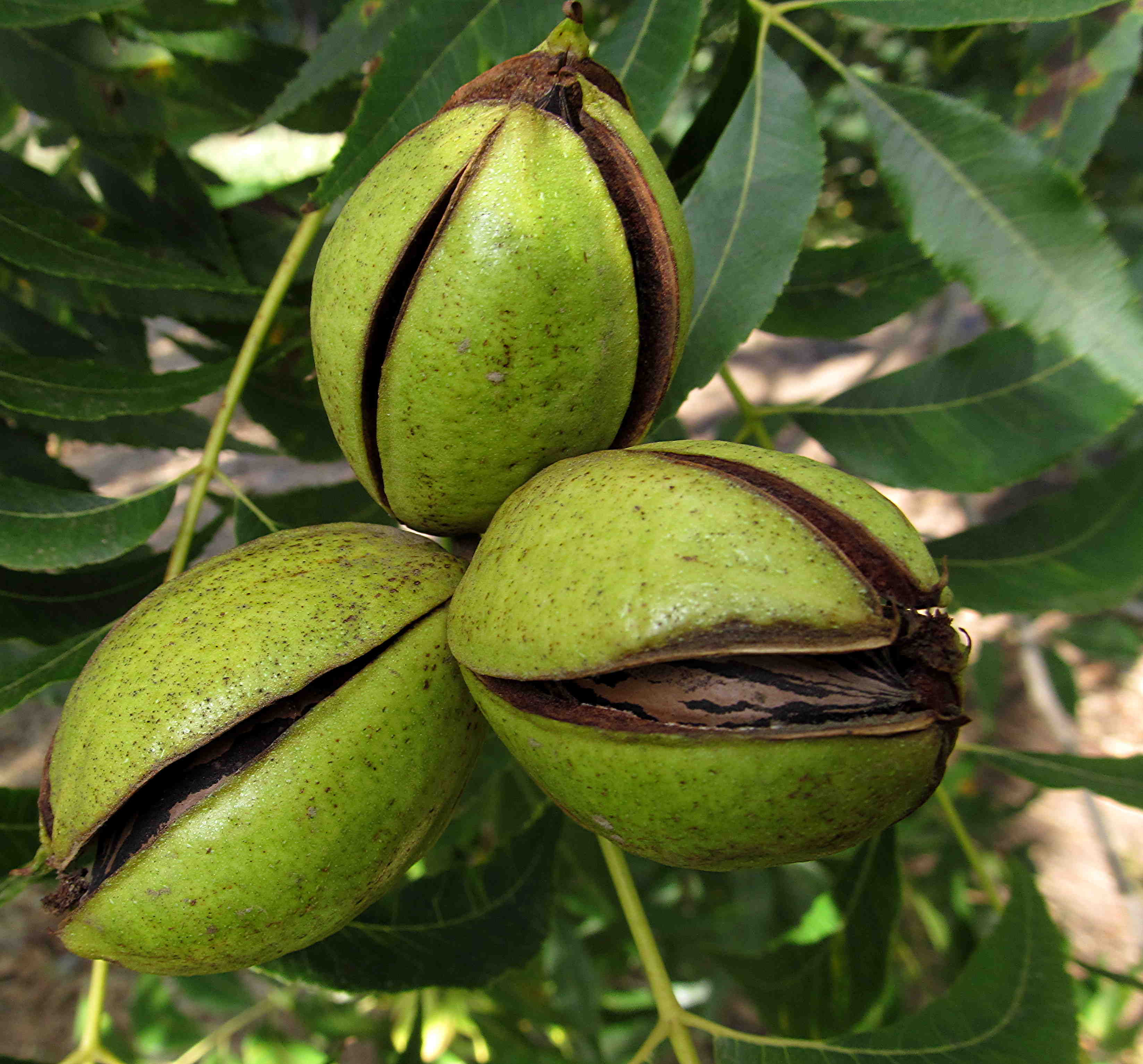
Pecans
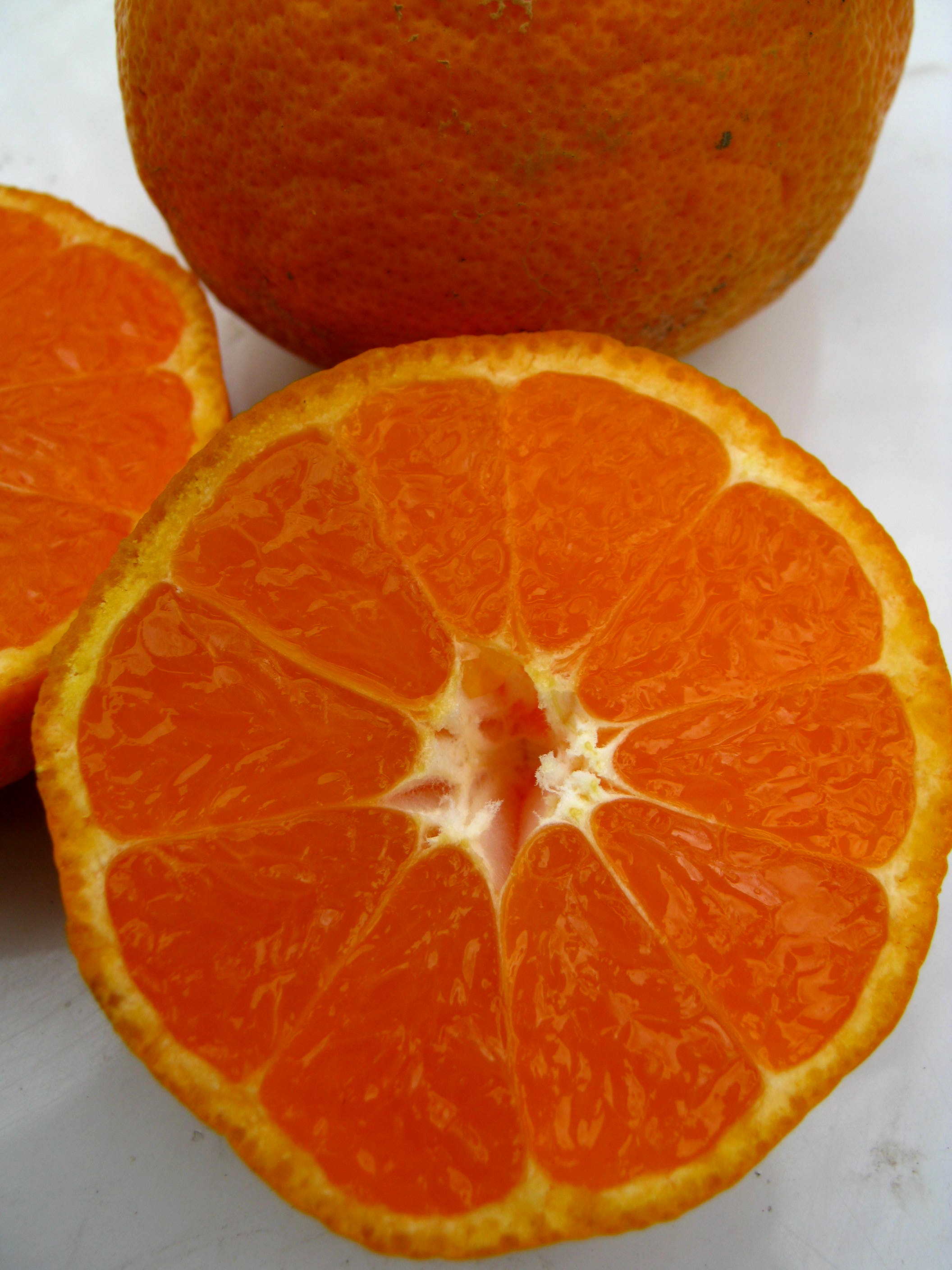






 Salvia Pink Frills
Salvia Pink Frills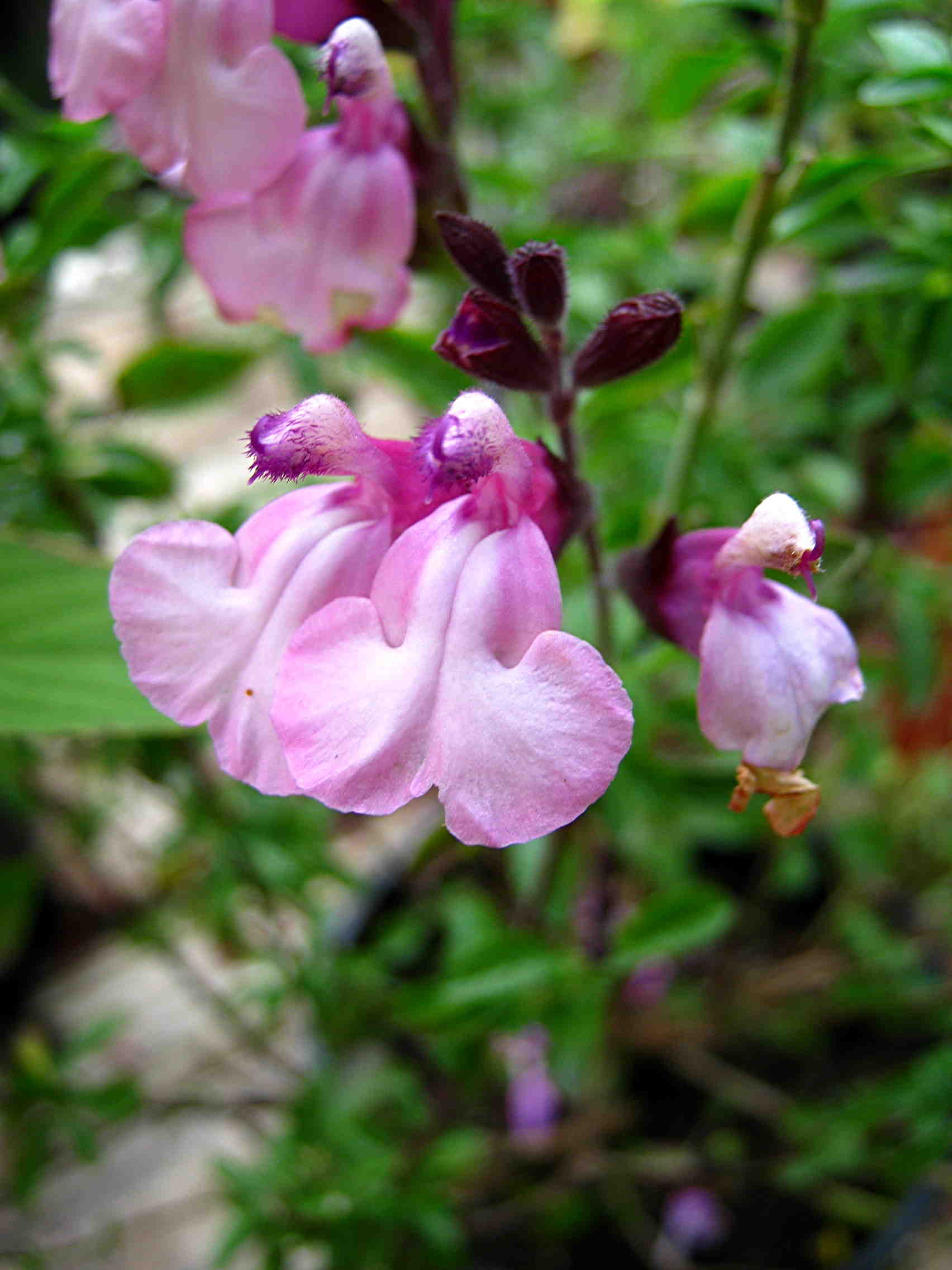 Salvia Dancing Shadows
Salvia Dancing Shadows Salvia Golden Girl
Salvia Golden Girl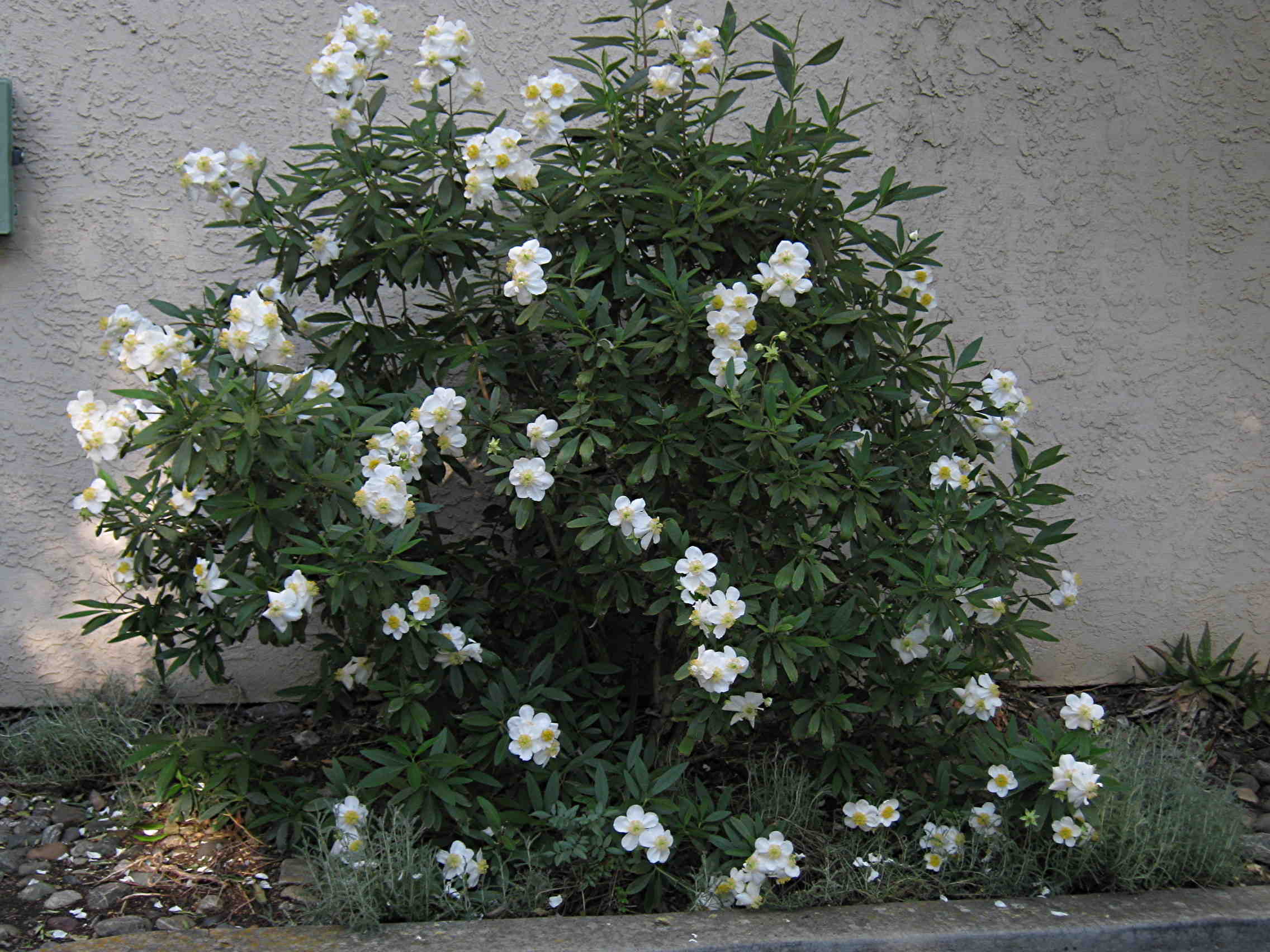 Carpenteria californica
Carpenteria californica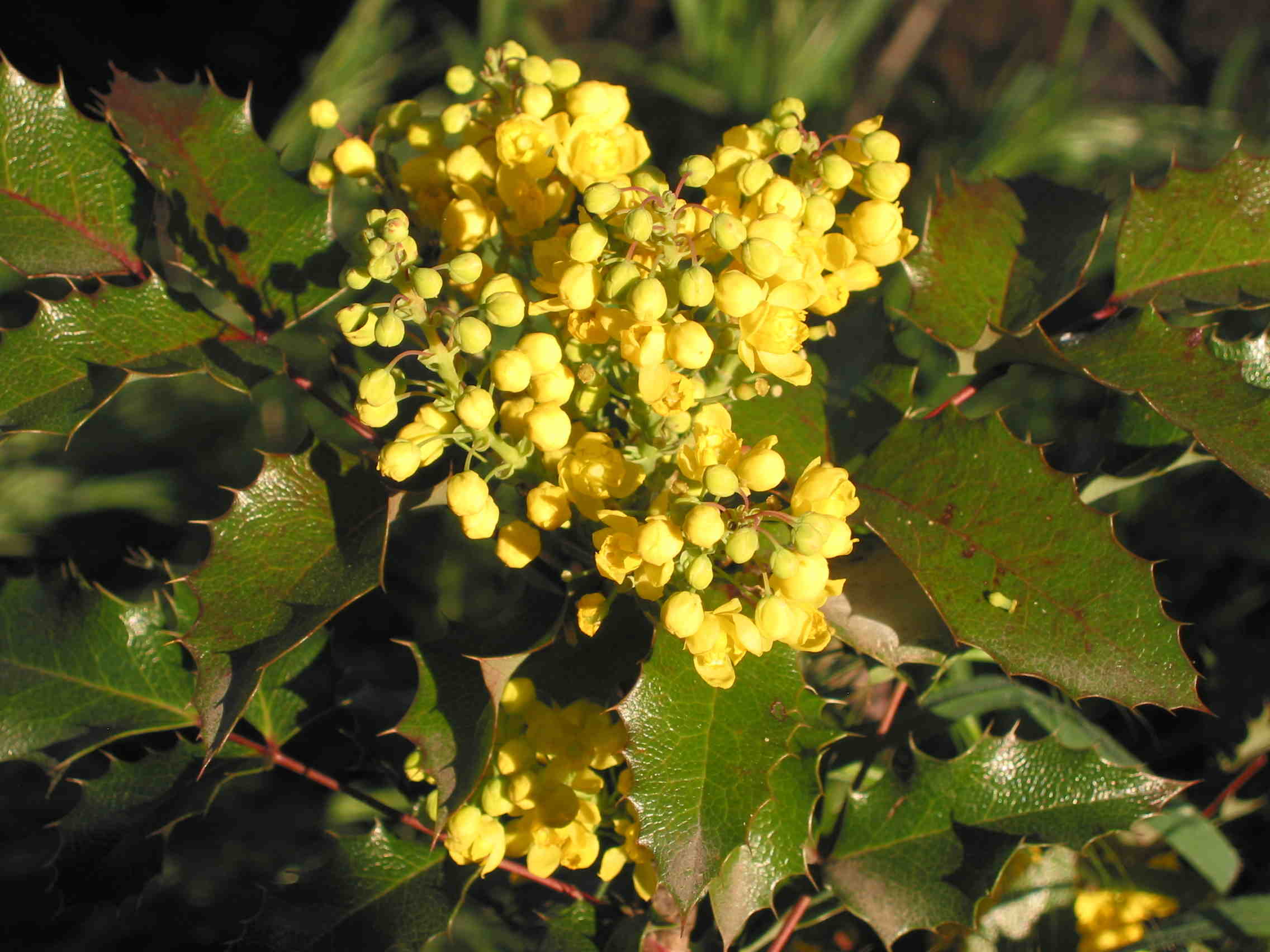 Mahonia aquifolium
Mahonia aquifolium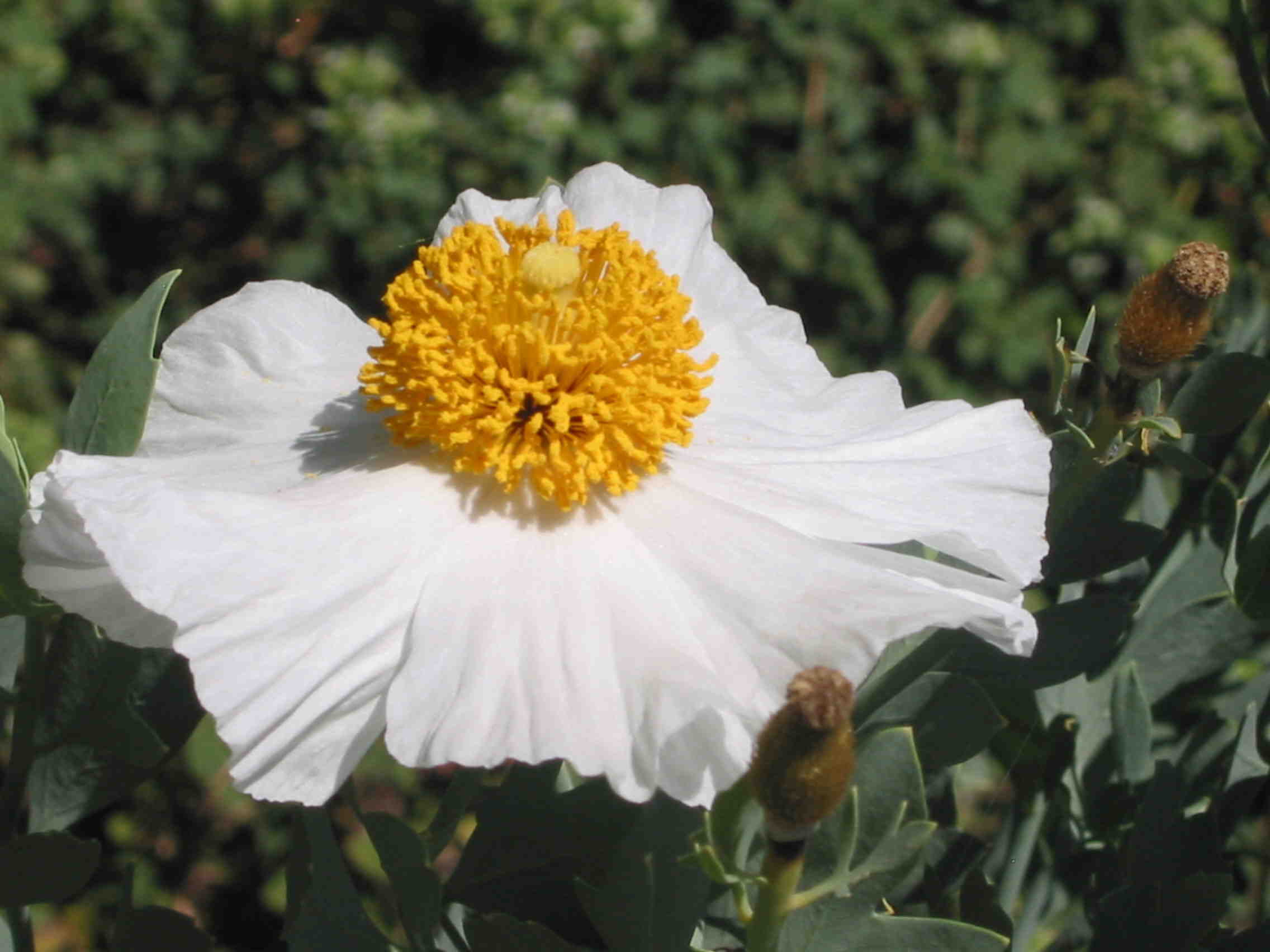
Lower Water Lawn Options
written for the Davis Enterprise, July 26 2012
As Davis faces water rate increases, garden professionals get lots of questions about ways to conserve water in new and existing landscapes. Previous columns have discussed low-water options for shrubs, ground covers, and trees in the landscape. The biggest water-user of all is the lawn. But that presents a conundrum, because the lawn is part of the yard we really use. Someone moving to a new house was asking about options and noted, “I have a big conflict about water usage. But we have two small kids who play on grass. Tough to play on cacti beds!”
Let’s not disparage lawns too much. That water use does provide natural air conditioning, heat reduction, and reduces dust. A normal lawn watered optimally requires about a thousand gallons of water a week per thousand square feet. But it takes that water and pumps it back up into the air around your yard, providing evaporative cooling. Grass is much cooler to walk on and work around than are bark, decomposed granite, concrete, and other non-plant surfaces. In California we use our yards as extensions of our living areas, and there is no question that a lawn is a more comfortable place to be than a drier landscape. Dogs and kids like to play on them.
As noted in my October column: "Form follows function," Louis Sullivan said. Let your landscape form follow the actual use patterns of your family. Lawns are for kids and dogs, and are usually unneeded in front. Put lawn where you will use it, not just where you'll look at it. Reducing your total lawn area is a simple way to save water.
You can probably reduce your total water usage on your existing lawn. Lawns don’t need daily water. A rule of thumb for traditional lawns is one inch of water, two times a week. Measure to see how long your sprinkler takes to put out an inch of water. I find most people aren’t watering long enough, but are watering way too often.
You could get a “smart timer.” Once the realm of commercial turf areas such as golf courses, these have become less expensive and may be appropriate for those of you with large lawns.
These amazing lawn sprinkler timers communicate with local weather data sites to determine the rate of watering needed, and adjust accordingly. When weather is cooler than average, they reduce the output. You can do the same thing, of course, but it takes some awareness of actual water use rates. The IPM web site maintained by UC Davis has links to weather stations all over the state, providing ET data (ET = evapotranspiration, the rate at which plants use water. It is measured in inches, just as rainfall is. Lawns use up to two inches of water a week in our hot, dry climate).
Go to http://ipm.ucdavis.edu/WEATHER/index.html and find the local weather station. Add up the ET rates and provide the water use calculated for the previous week.
Or you can be intuitive: if it’s cooler than average for the time of year, cut how long your sprinklers run a bit. We tend to fluctuate between short intervals of high temperatures, and periods when the delta breeze prevails and cools us off.
Keep an eye on your lawn. If it is looking duller green than usual, it is probably water stressed. Poke a trowel into the soil and assess the moisture. Water rates we give are optimal. Perhaps we can all learn to accept a little turf stress as long as the overall appearance is good enough.
If that all seems too complicated, the smart timers may be worth the investment. Local irrigation supply companies can give you more details, and a landscape contractor can install one for you.
Second option is to change your type of grass. All grasses are not equal in their water use. Until the advent of tall and dwarf fescues, most lawns were blends of bluegrass and perennial ryegrass. Those are the highest water users, and tend to be more susceptible to diseases. If you’re in an older neighborhood, it is possible you still have a blue/rye blend.
The newer, coarser-bladed fescues (tall and dwarf) can get by with as little as 20% less water than those older grasses. They are deeper-rooted, so they can go longer intervals between waterings.
If you have an older lawn, simply converting your lawn to a tall or dwarf fescue would enable you to cut your water use immediately. But they have a less refined look and require taller mowing height (preferably about 3 inches height in summer). If you are in a neighborhood built from the early 1990’s on, your lawn is probably already one of these blends of “dwarf tall fescue.” Yes, I know it’s an oxymoron: “dwarf fescues” are the lower, slower-growing strains of tall fescue.
Fescue is an important group of grasses. Most lawn blends that are labeled for shade contain another type: the fine fescues. The two most common are creeping red fescue and chewings fescues. They happen to tolerate more shade than other grasses, including the dwarf and tall fescue cousins. But we should all be using these more, as they are tolerant of even less water. Data I have seen show fine fescues can use up to 20% less water than the dwarf/tall fescues. They grow in full sun just as well as in shade, and make a very attractive lawn. As with other fescues, it is very important to mow them high (the grass, not you). Fescues have a high growing point. If you cut them too short, especially in hot weather, a lot of the individual plants will die out and the lawn may thin out. Mow at three inches if possible.
So converting your existing lawn to fine fescue can enable you to use 20 to 40% less water overall. If you don’t mind the appearance of grasses of differing texture, you can just over-seed your lawn and let the fine fescues fill in around your present grass mix. Otherwise, you can kill your lawn with chemicals or black plastic first. Fall is an excellent time to do the seeding, and it’s a pretty simple operation.
1. Mow your lawn as short as possible.
2. Rent a dethatcher and run it over the lawn. This machine rips out old, dead stems and leaves, exposing bare soil between the remaining healthy grass plants.
3. Apply a starter fertilizer.
4. Seed the fine fescue grass at 1 lb. seed per 100 square feet.
5. Top-dress the lawn with a fine layer of bagged compost.
6. Water daily, one or two times each day, until the grass germinates and grows to an inch or two of height.
7. Gradually reduce watering. Once you’ve mowed once or twice, you can revert to your regular watering schedule.
Timing this whole project just before a rainstorm in October or early November virtually guarantees success.
A final option is to consider a meadow. These fine fescues make very attractive groundcovers when left unmowed. On my rural property I have a large area where I seeded chewings fescue, hard fescue (a pasture grass), and creeping red fescue. I water as little as every two weeks in the summer. We allow it to grow long for an informal look. Once a year, in the spring, my strapping son rents a high-wheel mower from JB’s Power Equipment and mows the whole thing to prevent flowering and to manage any weeds that might be trying to poke through the grass.
It’s a great area for throwing balls for our dogs, and kids of all ages love to lie on the soft green grass. It’s very active with wildlife: last year when he mowed it praying mantids were scattering in all directions. Swallows fly above the field each evening. Unmowed grasses are important harboring sites for beneficial insects.
The UC Davis Arboretum is establishing a large area of California native grass in a meadow at the edge of the lawn area near the oak grove on the west end. They’re using Blue grama (Bouteloua gracilis). Other options include native strains of Festuca californica and Festuca rubra (there are those fescues again). These are available as small plant starters through Suncrest Nurseries, a wholesale grower in the Bay Area. And many larger ornamental and native grasses can be used for informal meadows. The key is to plant a mowable, walkable, lower-growing species where you’d be walking on it, and then plant some of the taller ornamental grasses on the edges.
We need to rethink lawns. Not necessarily get rid of them, but put them where we use them. Create the effect we want with lower-water grasses. And develop a new culture: less clipped, less formal, more appropriate, more sustainable, and less expensive.
You can find previous columns about low-water plant choices in the Enterprise archives. Look for the October and November 2011, and January 2012 columns. They are also available at http://redwoodbarn.com.
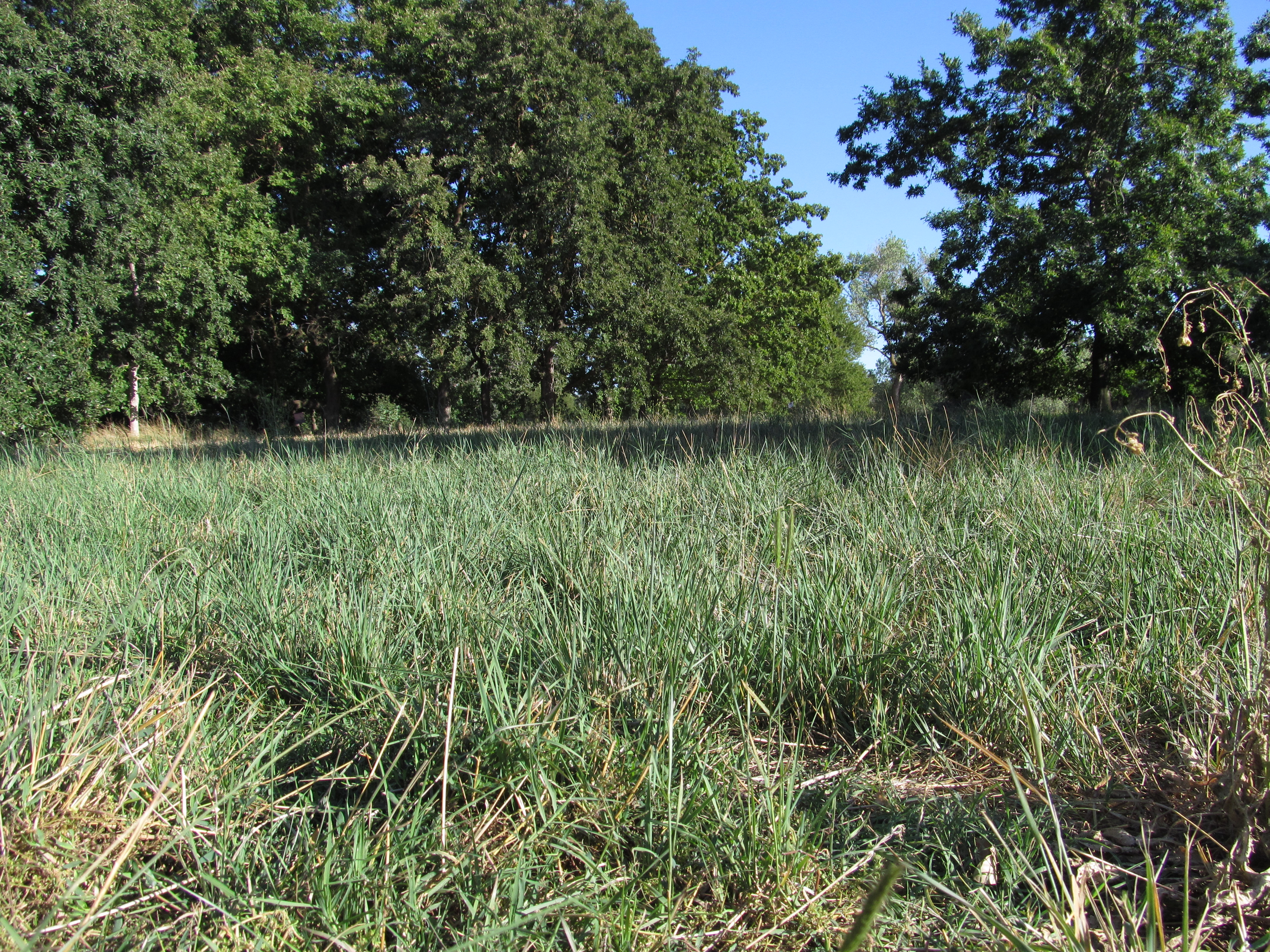
A work in progress: the UC Davis Arboretum is converting a large part of the lawn at the west end to native grasses. Please don’t walk on it while it’s establishing! This species should be able to grow and look good with much less frequent watering than traditional turf.

Our meadow of fine fescues. This area was seeded with chewings, hard, and creeping red fescues. The first two form clumps, the latter spreads. The effect is informal, great for playing with dogs and kids.
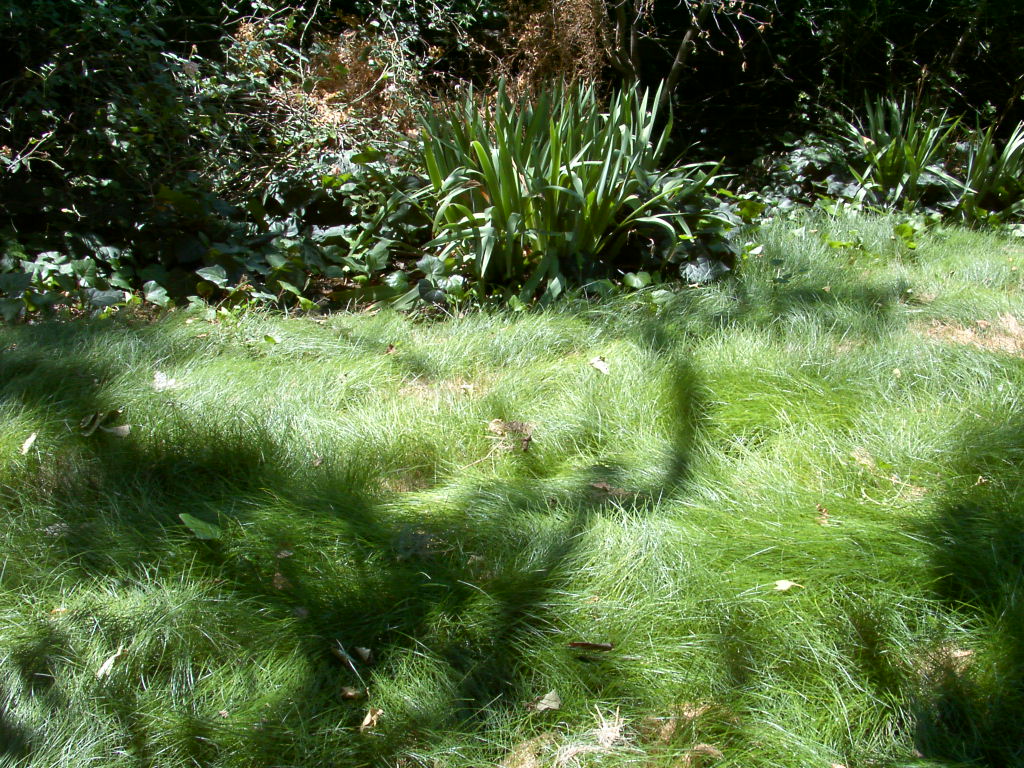
Here creeping red fescue has been seeded pure in a shaded area and allowed to grow without mowing, making a soft ground cover. Creeping red fescue is more tolerant of shade than most other lawn grasses.
The leaf blades of the fine fescues. The individual blades are rounder and much narrower than other grass species. You may already have these grasses in your lawn, as they are often added to seed blends for their shade tolerance.
Many ornamental grasses can be planted, preferably in groups or masses, on the edges of lawn areas to continue the visual effect. Most are much more drought tolerant than traditional turf species. Here is a specimen of Nassella tenuissima (formerly Stipa tenuissima), a fine-leaved ornamental grass.
c 2012 Redwood Barn Nursery